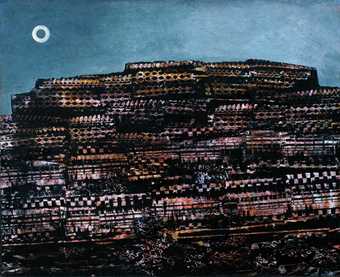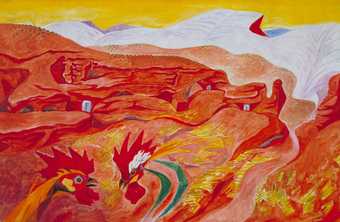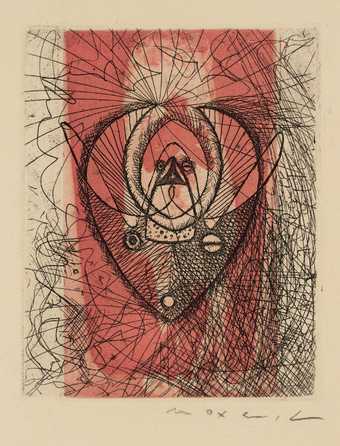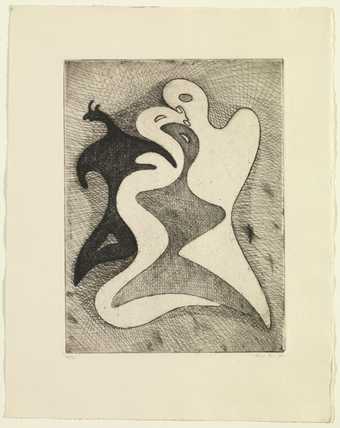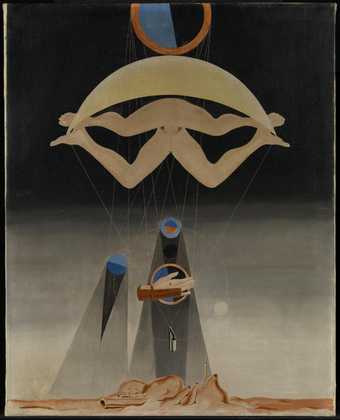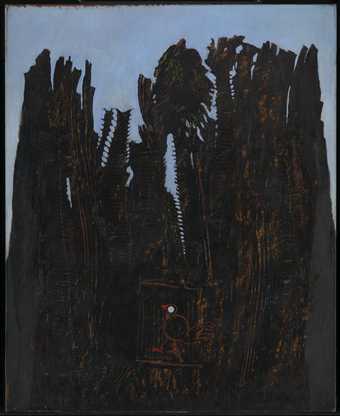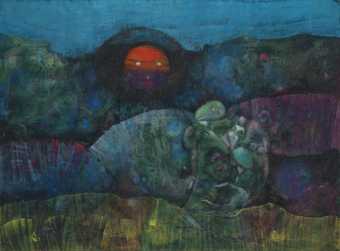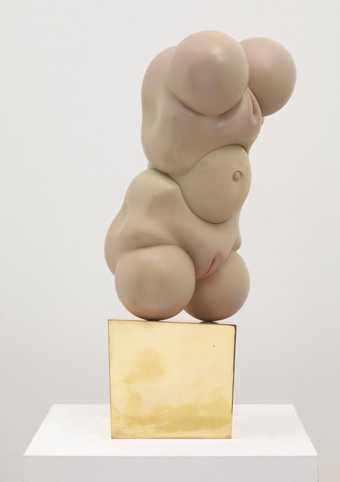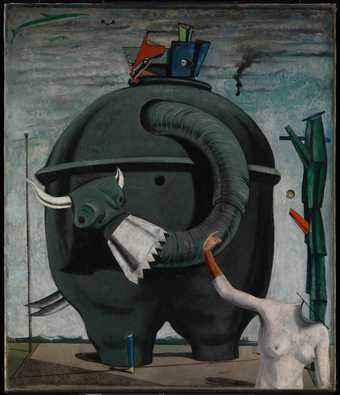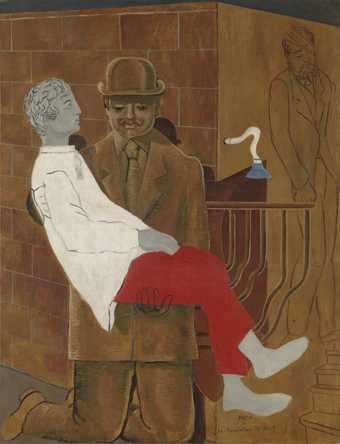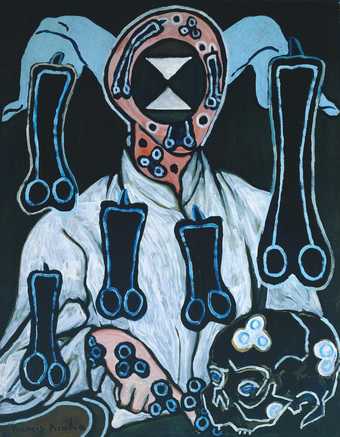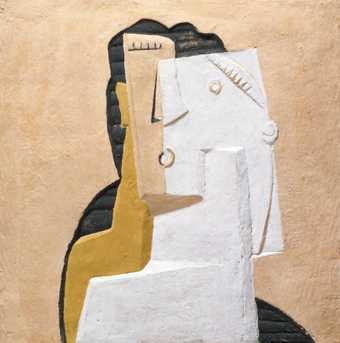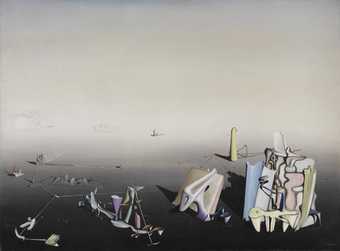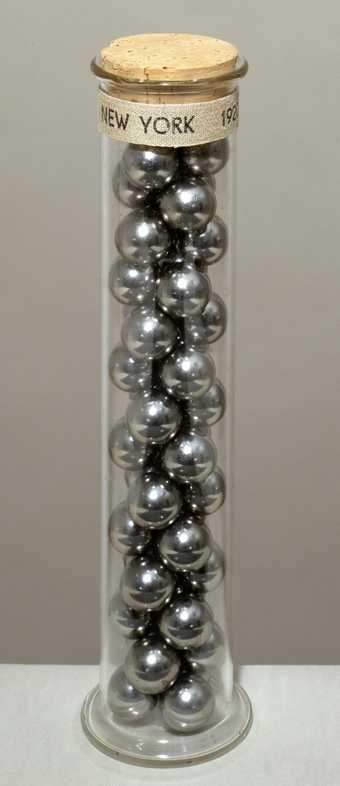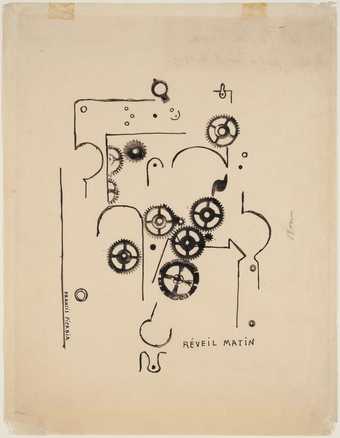
In Tate Britain
- Artist
- Max Ernst 1891–1976
- Medium
- Painted plaster and cork on canvas
- Dimensions
- Unconfirmed: 680 × 560 × 63 mm
frame: 856 × 742 × 117mm - Collection
- Tate
- Acquisition
- Purchased 1983
- Reference
- T03707
Display caption
Ernst was a key figure in the anarchic circles of Cologne Dada before moving to Paris and the emerging Surrealist movement. This strange work dates from that moment of transition. The use of rough cork is typical of Ernst’s inventive exploration of materials. By making the walls of the Dada city from this unexpected substance, he may offer a wry reflection on Dada’s temporary, but resilient, nature.
Gallery label, July 2008
Does this text contain inaccurate information or language that you feel we should improve or change? We would like to hear from you.
Catalogue entry
T03707 Dadaville c.1924
Painted plaster and cork mounted on canvas
26 3/4 × 22 × 2 1/2 (680 × 560 × 63)
Not inscribed
Purchased from the Trustees of Sir Roland Penrose's Voluntary Settlement (Grant-in-Aid) 1983
Prov: Paul Éluard, Paris (purchased from the artist); Sir Roland Penrose, London, 1938
Exh:
Max Ernst, London Gallery, December 1938 – January 1939 (23, as ‘Forêt’ 1924); Max Ernst, Institute of Contemporary Arts, December 1952 – January 1953 (10, as ‘Forest’); Retrospective Exhibition of Paintings by Max Ernst, Matthiesen Gallery, November–December 1965 (8, as ‘Forest’); Max Ernst, Musée National d'Art Moderne, Paris, November–December 1959 (158, as ‘Dadaville’ 1923–4); Max Ernst, Tate Gallery, September–October 1961 (40); Max Ernst: Oeuvre Sculpté 1913–1961, Le Point Cardinal, Paris, November–December 1961 (3, repr.); Max Ernst: Målningar, Collage, Frottage, Teckningar, Grafik, Böcker, Skulpturer 1917–1969, Moderna Museet, Stockholm, September–November 1969 (14); Dada and Surrealism Reviewed, Hayward Gallery, January–March 1978 (8.15, repr.)
Lit: Werner Spies, Sigrid and Günter Metken, Max Ernst: Werke 1906–1925, Cologne, 1975, no.673, p.351, repr. as ‘Dadaville’ c.1924
Also repr: Patrick Waldberg, Max Ernst, Paris, 1958, p. 140; Gaston Diehl, Max Ernst, Paris, 1973, p.20 in col.
This painted relief, made mainly of cork, is unique in Ernst's work and is one of his first experiments with sculpture. The photograph reproduced by Patrick Waldberg shows that it was originally more regular, with four rows of button-like corks up the projecting vertical strips; those up the left hand strip are now missing and so is one from each of the two strips to the right. The cork has crumbled away in places, particularly up the left-hand vertical strip and at the left-hand side of the base, which originally extended further.
The relief has some affinity to the series of paintings called ‘Forest’ which Ernst began making in 1925 and was sold to Sir Roland Penrose by Paul Éluard in 1938 under this title; but the title was changed to ‘Dadaville’, presumably at the artist's suggestion, at the time of his exhibition at the Musée National d'Art Moderne in Paris in 1959. ‘Dadaville’ can be translated as ‘Dada Town’ implying a kind of fantastic Dada townscape.
Published in:
The Tate Gallery 1982-84: Illustrated Catalogue of Acquisitions, London 1986
Explore
- abstraction(8,615)
-
- from recognisable sources(3,634)
-
- landscape(1,191)
- townscapes / man-made features(21,603)
-
- townscape(3,297)
You might like
-
Max Ernst The Entire City
1934 -
André Masson Ibdes in Aragon
1935 -
Max Ernst Untitled from ‘La Brebis galante’
1949 -
Max Ernst Dangerous Correspondances
1947 -
Max Ernst Men Shall Know Nothing of This
1923 -
Max Ernst Forest and Dove
1927 -
Max Ernst Moon in a Bottle
1955 -
Hans Bellmer The Doll
1936, reconstructed 1965 -
Max Ernst Celebes
1921 -
Max Ernst Pietà or Revolution by Night
1923 -
Francis Picabia Portrait of a Doctor
c.1935–8 -
Henri Laurens Head of a Boxer
1920, cast 1921 -
Yves Tanguy Azure Day
1937 -
Man Ray New York
1920, editioned replica 1973 -
Francis Picabia Alarm Clock
1919

